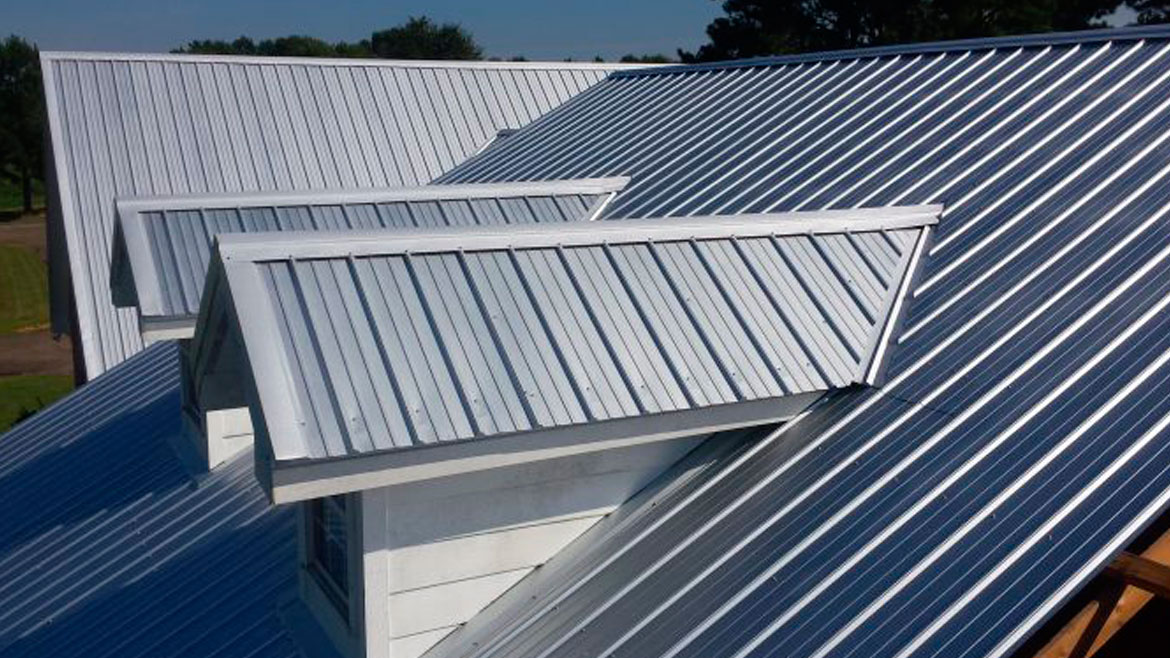

This must be installed first before you can continue with the panels. The offset cleat is what allows us to create a true hidden fastener metal roof installation. Each metal roof installation is unique based on the type of metal roofing and also the manufacturer’s instructions. Hidden fasteners or standing seams are installed similarly to exposed fastener metal roofing but have a few additional steps. How Hidden Fastener Metal Roofs Are Installed

Types of metal roofs install#
Continue to attach and install more panels until the roof is covered. Next, you will install exposed fasteners which are painted fasteners along the center. Over-tightening draws the panel down and puts tension into the panel. The fasteners should be spaced 12 inches apart and be screwed in tight, but not too tight. Making sure the panel is square, the panel is screwed along the face using a pancake head fastener. Step 4: Installation and Exposed Fasteners Apply the sealant tape along the center of the entire eave and remove the tape backing. One row of sealant tape goes between all layers of metal. Now you have a panel that is ready to install. You will also need to cut through the male and the female rib to get to the flat of the panel. Measure carefully and cut the panel to length. When doing an exposed fastener metal roof installation, you need to overhang the eave by one and a half or two inches at most. Step 2: Cut Panels to Length & Add Eave Trim Square off the edge at the very beginning so you start off right. This is critical to a correct installation because if the first panel is tilted even just a little bit, all the panels that come after are going to be tilted as well. It’s important to start square when you are installing a metal roof. Exposed Fastener Installation ProcessĮxposed fasteners are one of the quickest metal roof installation methods, it follows the steps above, including the following four basic steps: There are many types of metal roofs – these are just the basics of metal roof installation for the two most common types of metal roofs. The roofing contractor is responsible for looking over their work and ensuring everything was done properly. Once the roof is complete, it needs to be inspected. Typically, the manufacturers require installers to be certified in their specific roofing material before they can install it correctly. You may also need to apply sealant tape, clips, or other fasteners. No matter what, you will need to screw in each panel, with screws specially intended for the roof. standing seam) and the manufacturer of the panels. The methods vary based on the type of roofing (exposed fastener vs. Metal roofing typically comes in panels, which are installed step-by-step. The next step is to install the metal roofing itself. Your building codes dictate how much protection you need. Metal roof job starts with a waterproof layer and a layer of felt or other fabric for the underlayment to protect from water and ice. If you notice any type of water damage, cracking, or any other problem, it is important to fix these before a metal roof installation. Once all of the old roofing material has been removed, it’s important to inspect the wooden base. It is always best to start the project with a clean and clear surface. Most building codes only allow two layers of roofing materials on a building at a time, and if you already have shingles – they can curl and buckle underneath the metal. Metal roofing can be installed on top of any other type of roofing, but this isn’t recommended. The first step to metal roof installation is removing the old roof. The process is slightly different based on the specific manufacturer, but it generally follows the same basic steps. The process is different from traditional shingles or tiles. New metal roof installation is a specialized process that can’t be done by any roofer. Our Fort Wayne, IN expert metal roof installation team is here to break down the types of metal roofing, how they are each installed, and help you explore your options in styles, colors, and installation details to find exactly what you’re looking for. The styles, colors, textures, and possibilities are endless. Today’s metal roof panels go beyond the classic barn or cabin roof. Metal roofing is growing in popularity as a choice for homeowners all across the country, especially in Fort Wayne, IN.


 0 kommentar(er)
0 kommentar(er)
